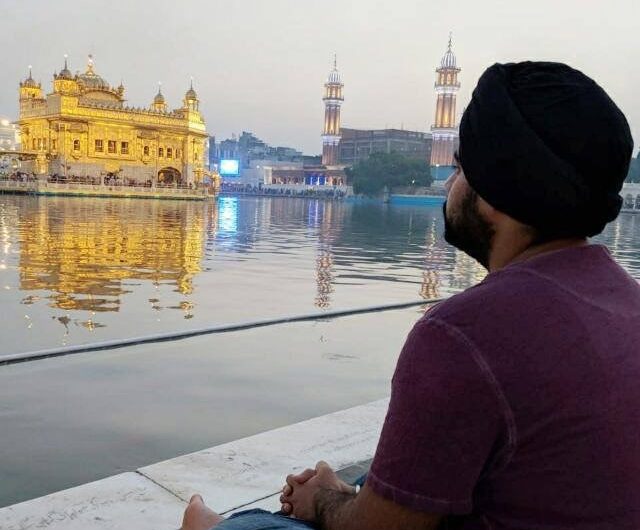
Sikh Temple to Visit in Your Life
Sikh Temple to Visit in Your Life
Sikh is a religion that originated in the northern part of the Indian subcontinent around the end of the 15th century. Based on the spiritual teachings of Guru Nanak Dev Ji, the first Guru and the nine Sikh gurus that succeeded him. The Tenth Guru, Guru Gobind Singh, named the Sikh scripture Guru Granth Sahib as his successor, terminating the line of human Gurus and making the scripture the eternal, religious spiritual guide for Sikhs.
Sikh Temple also called Gurdwara. The word Gurdwara stands for “guru – dwara” which means through or by means of guru and can also be called “the gateway to guru”. A Sikh Temple always keeps its doors open for people of all religions and faiths. The objective is to find inner peace and unite with the Holy Spirit i.e. with god and the guru helps in this process of unison and achieving peace. All Sikh Temple have the holy book of Sikhs “Guru Granth Sahib Ji” placed in it which is the current guru of the Sikh religion.
We have prepared a list of some of the famous Sikh Temple in India for you to visit:
Harmandir Sahib, Punjab
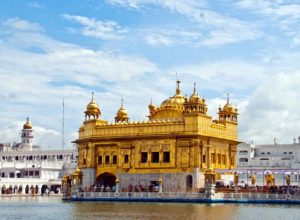
Situated in Amritsar Punjab, Hari Mandir Sahib also known as Golden Temple because of its structure made up of real gold. In 1588, Guru Arjan laid the foundation stone of this sacred shrine and it was in 1604 that he placed the Holy Scripture called Adi Granth here. This is the most famous and significant place of worship in the Sikh religion with its doors open from all the sides to people of all faiths.
Hemkund Sahib, Uttrkhand
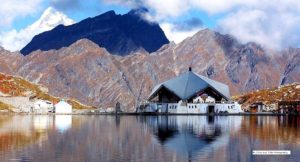
Situated in Uttrakhand is 15000 feet above the sea level in the Himalayan range is a famous center of pilgrimage for not just Sikhs but thousands of devotees of all religions. It is a star-shaped Sikh Temple that has been specially designed keeping in view the prevailing weather and altitude of the place. According to the autobiographic account of the tenth Guru, Guru Gobind Singh Ji, he meditated over this place in his previous birth. This shrine is regarded as an epitome of all the principles the Sikh religion believes in.
Takht Sri Patna Sahib, Bihar

Situated in Patna, Takht Sri Patna Sahib is one of the most important Sikh religious places in India. Patna is believed to be the birthplace of Guru Gobind Singh and the placewhere he also spent many years of his life. The Gurudwara was built in the remembrance of Guru Gobind Singh by Maharaja Ranjit Singh in 1780. Guru Gobind Singh, the tenth Sikh Guru, was born in Patna, Bihar. He also spent his early years here before moving to Anandpur. Besides being the birthplace of Guru Gobind Singh, Patna was also honored by visits from Guru Nanak as well as Guru Tegh Bahadur.
Bangla Sahib
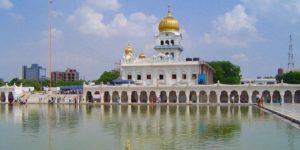
Situated in the heart of Delhi, Bangla Sahib is one of the imminent landmarks of the capital city. Guru Harkrishan Sahib Ji stayed while on his visit to Delhi in 1664. He cured diseases like smallpox, chicken pox and cholera which were an epidemic those days with sacred water. That water now forms a “sarovar” which is present in the centre of this Sikh Temple people take a dip in it to remove all bodily and mental dirt. There is a museum in this Sikh Temple which depicts the great Sikh history.
Keshgarh Sahib
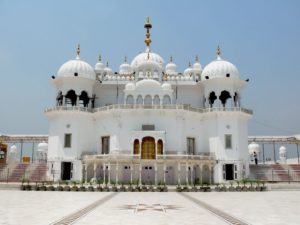
Known as Gurdwara Anandpur Sahib, this Sikh Temple is the main shrine of the holy city of Anandpur (the City of Bliss) Sahib. This city was founded by ninth Sikh Guru, Guru Tegh Bahadur Ji and is a home to many Sikh Temple. Keshgarh Sahib is famous and of great importance since it is also one of the five Takhats and a seat of authority for the Sikhs. The shrine is located in the center of the city which is around 95km north-west of Chandigarh. It was here that the Khalsa Panth was born, when the young Guru called for a special congregation on the Baisakhi day of 1699 with thousands of Sikhs in attendance. One can only imagine how large the area was around Sri Keshgarh Sahib then to accommodate the many thousands of Sikhs in attendance on that historic day.
Fatehgarh sahib
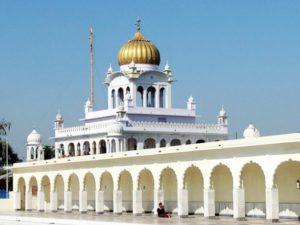
Fatehgarh Sahib is named after Fateh Singh, the 7 year old son of Guru Gobind Singh who was seized and buried alive along with his 9 year old brother Zoravar Singh, by the Mughal Army under the orders of commander Wazir Khan during the ongoing Muslim-Sikh war of early 18th century. The town experienced major historical events after the martyrdom of the sons in 1705, with repeated change of control between the Sikh and Muslim rulers.
Ber Sahib
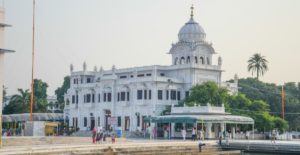
Known as Ber Sahib because of the Ber tree which was planted over here by the first Guru, Guru Nanak Dev Ji. Now this Ber tree has grown into a huge tree and the Gurdwara is situated in Kartarpur, Punjab. Guru ji stayed over this place for 14 yrs. He used to bathe in the river Kali Bein, also known as Kali Beri, and would meditate for hours. But one day he disappeared while having a bath and returned after 3 days. This was when the Guru Ji decided to begin teaching Sikhism.
Manikaran Sahib
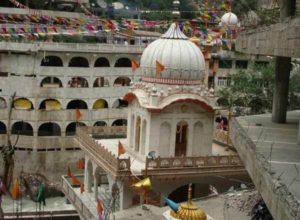
The Gurdwara Manikaran Sahib is known for its lovely scenic beauty as it is situated in the mountains of Manali. Historically the Sikh Temple has enough significance as the first Guru, Guru Nanak Dev Ji is known to have first visited this place in 1574 along with his disciples Bhai Mardana and Bhai Bala. This place is considered as the first place where Guru Nanak Dev Ji meditated through his journey and he is also known to perform few miracles over here.
Data Bandi Chod Sahib
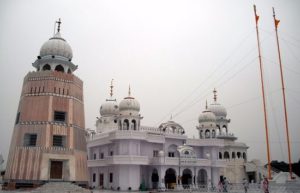
This Sikh Temple located in Gwalior, MP, known as Bandi Chod because it signifies the release of 52 Rajput rulers who were imprisoned in the Gwalior fort. The sixth Sikh guru, Guru Hargobind Singh Ji stayed in the Gwalior fort to pray for Jahangir’s health where he met these rulers and decided to help them to get free. Consisting of 6 storeys made up of entire marble and having doors made up of gold, this Sikh Temple was constructed in 1968 and Sant Baba Uttam Singh Ji was given the charge of its construction.
Anandpur Sahib
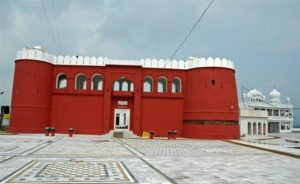
Anandpur Sahib, one of the holiest Sikh sites, was founded by Guru Tegh Bahadur. He lived in the Guru ka Mahal in the old quarter of the town. Anandpur Sahib is a city in Rupnagar district, in the state of Punjab, India. Located near the Sutlej River, the city is one of the most sacred places in Sikhism, being the place where the last two Sikh Gurus lived and where Guru Gobind Singh Ji founded the Khalsa Panth in 1699. The city is home to Keshgarh Sahib Gurdwara, one of the five Takhts in Sikhism.









